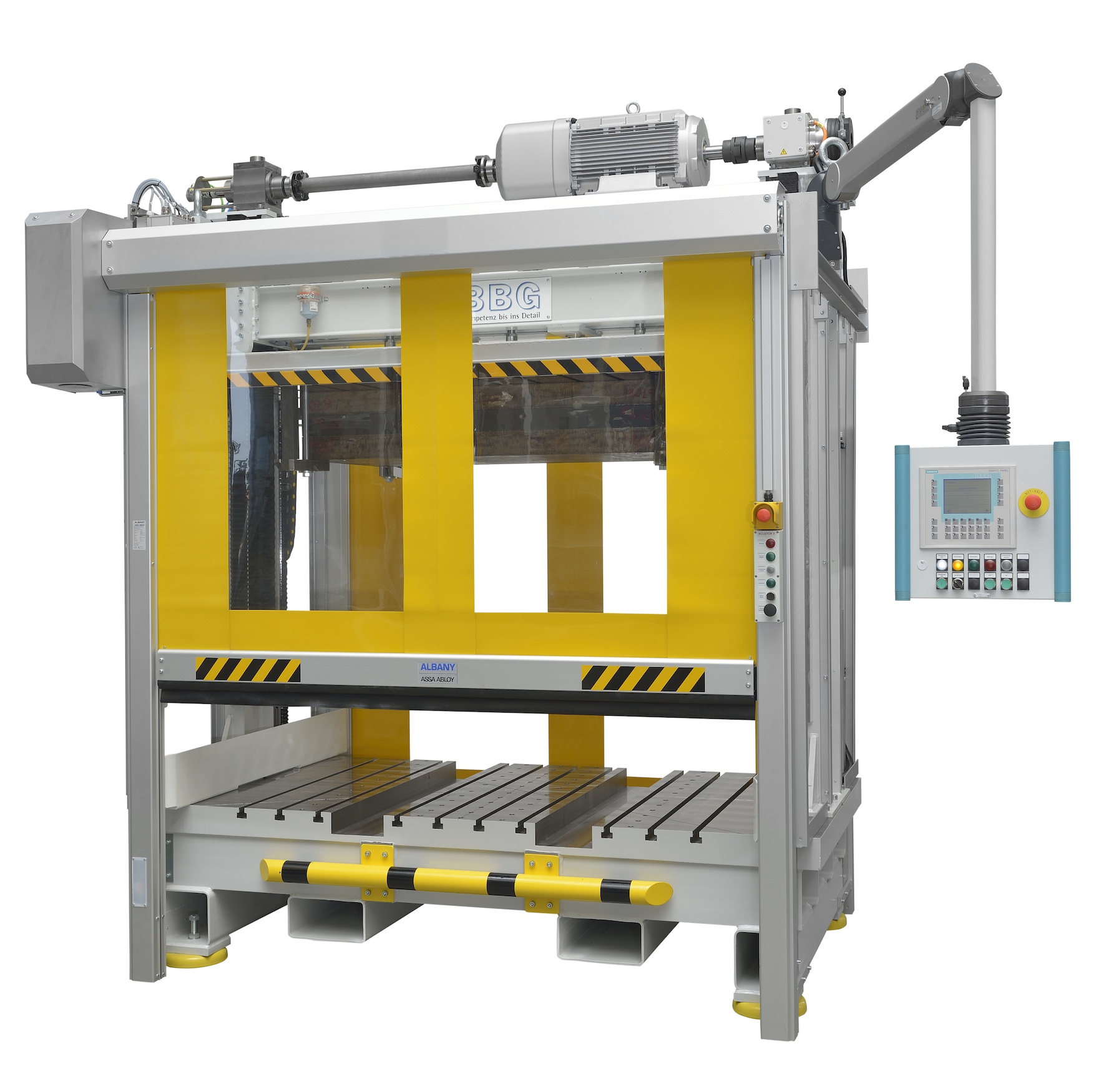Machinery manufacturer CMG Granulators has unveiled a new cutting chamber design at the Plastics Recycling Show Middle East and Africa (PRS ME&A), taking place in Dubai between Sept. 10-12.
The Italy-based manufacturer introduced the new design for its Evoluzione series granulators. The new rotor configuration allows the rotor blades to cut the plastic feedstock perpendicularly against the bed blades, obtaining a higher degree of cutting penetration and precision.
Using an open type design, CMG has reduced the space taken by the rotor to only 30% of the cutting chamber volume, compared to the usual 70%.
“This solution features a new design which allows us to install less power compared to our competitors. It is more energy efficient and also reduces the likelihood of current spikes,” Alessandro Pagani, key account manager at CMG, told Sustainable Plastics at PRS ME&A.
The rotor blades are mounted on the edge of the rotor holding modules and not on a holding block, allowing for a very high inclination angle. This design also allows easy and quick servicing or replacement of the blades, with access from the front of the machine.
The rotation of the rotor does not produce the so-called ‘drag’ effect, meaning the mass of material being ground in the cutting chamber does not rotate with the rotor producing lots of dust and fine particles. The production of fine particles is reduced to few percentage points, versus a common 15% or more from conventional granulators, according to CMG.
“This is one of the largest systems in the market with a throughput of up to 5000 kg/hour. We couple it with a unique CMG evac design for negative pressure air conveyance system and dusting, plus air filtering,” Pagani said.
The new evac systems operate under full vacuum, meaning the regrind material is evacuated from the granulator and is gently conveyed to a cyclone receiver and through a dedusting chamber, all under negative pressure. Using negative pressure means that the system does not generate any dust or small particles by friction against the conveying pipe walls. It also avoids the impact against the blower impeller blades used on conventional blow-thru evac systems.
The regrind is then deposited in a storage bin, gaylord, or big bag while the powdery air is handled by a purposely designed automatic self-cleaning filter unit. The powder collected at the filter unit is automatically compacted and deposited for recycling or disposal. CMG says the complete system guarantees zero pollution to the environment. The degree of filtration of the air from the filter station can be adjusted in respect to local regulations or specific requests.
“Our blower never gets in touch with the material, because the negative pressure along the pipeline is sufficient to convey the material from the granulator all the way up to the cyclone separator,” Pagani explained. “The dust is collected in the hopper base and discharged continuously by a air lock that seals the negative pressure inside the unit, keeping the negative pressure value in the range that can be useful for both the conveying and the air filtration, allowing for 24/7 operation.”
Demand in the Middle East and Africa
The new machine design is proving popular at the PRS ME&A.
“People at the show are really interested in the up to date technology of our cutting design, the grinding capability and the throughput that this unit is able to perform compared to similar sized machines of our competitors,” Pagani said.
“We are having conversations with both end customers and OEMs. Our goal is to supply these units as replacement of old, existing units in recycling lines, or to propose it as support for the granulation process in new recycling lines.”
Interest for CMG machines is mostly coming from the United Arab Emirates (UAE) and East Africa, Pagani revealed.
“We are able to provide high-end technology, but with basic control solutions like simple on/off air safety functions. Everything that is usually required in Europe or the United States – PLC controls, interface with other machines – is not yet required by countries in East Africa. They want a simple, bread and butter, but reliable and efficient, energy saving, system,” Pagani added.
Source: sustainableplastics.com





